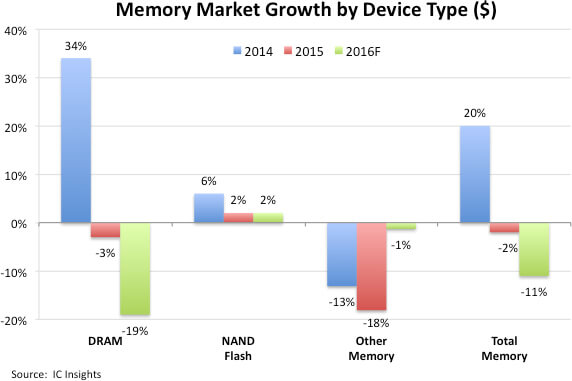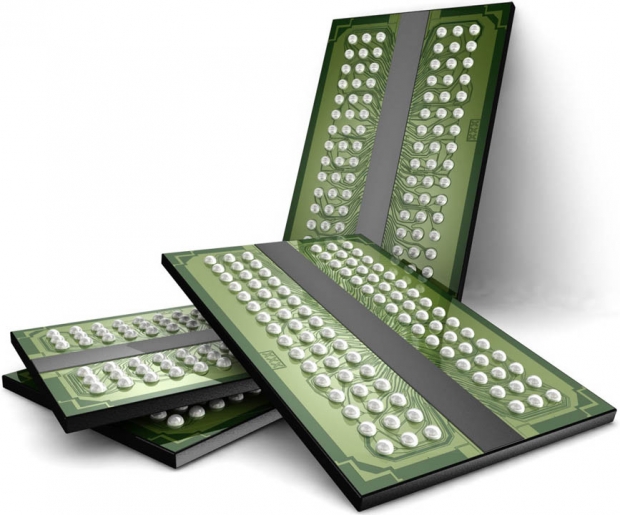The report indicates that the memory market increased more than 20 percent consecutively in 2013 and 2014, but then fell upon difficult times in 2015 following slow system demand, excess inventory levels and steep price cuts. This resulted in a three percent decline in the 2015 memory market to $78 billion.

These weak market conditions carried into the first half of 2016 but later began to stabilize as memory prices were slowly brought back up to equilibrium. By the end of this year, however, the market still finished down one percent year-over-year.
Next year is expected to be a different story, as ASP gains in DRAM and NAND flash should boost the market to a record high of $85.3 billion, while the overall market’s average annual growth rate for the next four years is forecast at 7.3 percent. During this timeframe, the number of memory units shipped should have a compounded annual growth rate of 5.6 percent.
Meanwhile, ASP shipments are expected to increase at an average annual rate of 1.8 percent in every year except 2020, as they continue to play a bigger role in overall memory market growth.
DRAM market to grow by 11 percent next year
While the DRAM market enjoyed a solid boost in growth during 2013 and 2014, it followed the same relative trend of the overall IC market in 2015 and 2016, tumbling three percent and then 10 percent respectively. Thankfully, there was some supply expansion in the second quarter from increased output of Micron’s 20nm process and Hynix’s 21nm process, according to DRAMeXchange.
IC Insights now expects the market to make a strong recovery next year, thanks to demand from the enterprise market, new smartphones and mobile platforms in general. Two new China-based companies, Sino King Technology and Fujian Jin Hua IC Company, are also expected to enter the market by late 2017 or early 2018, which the source claims might set off another round of price declines.




